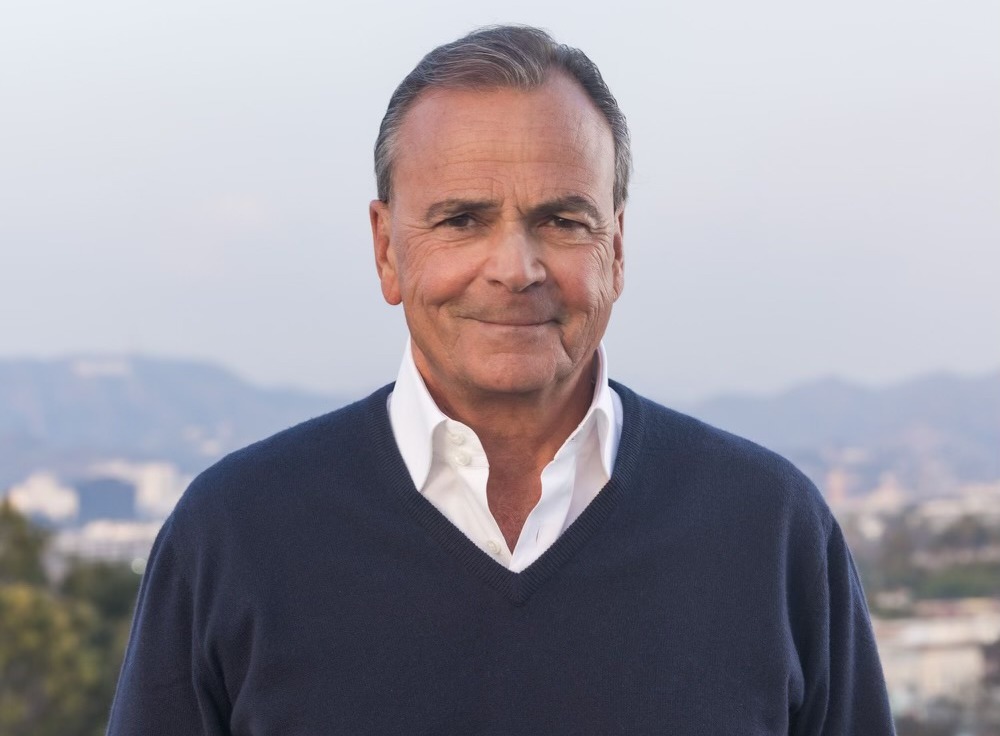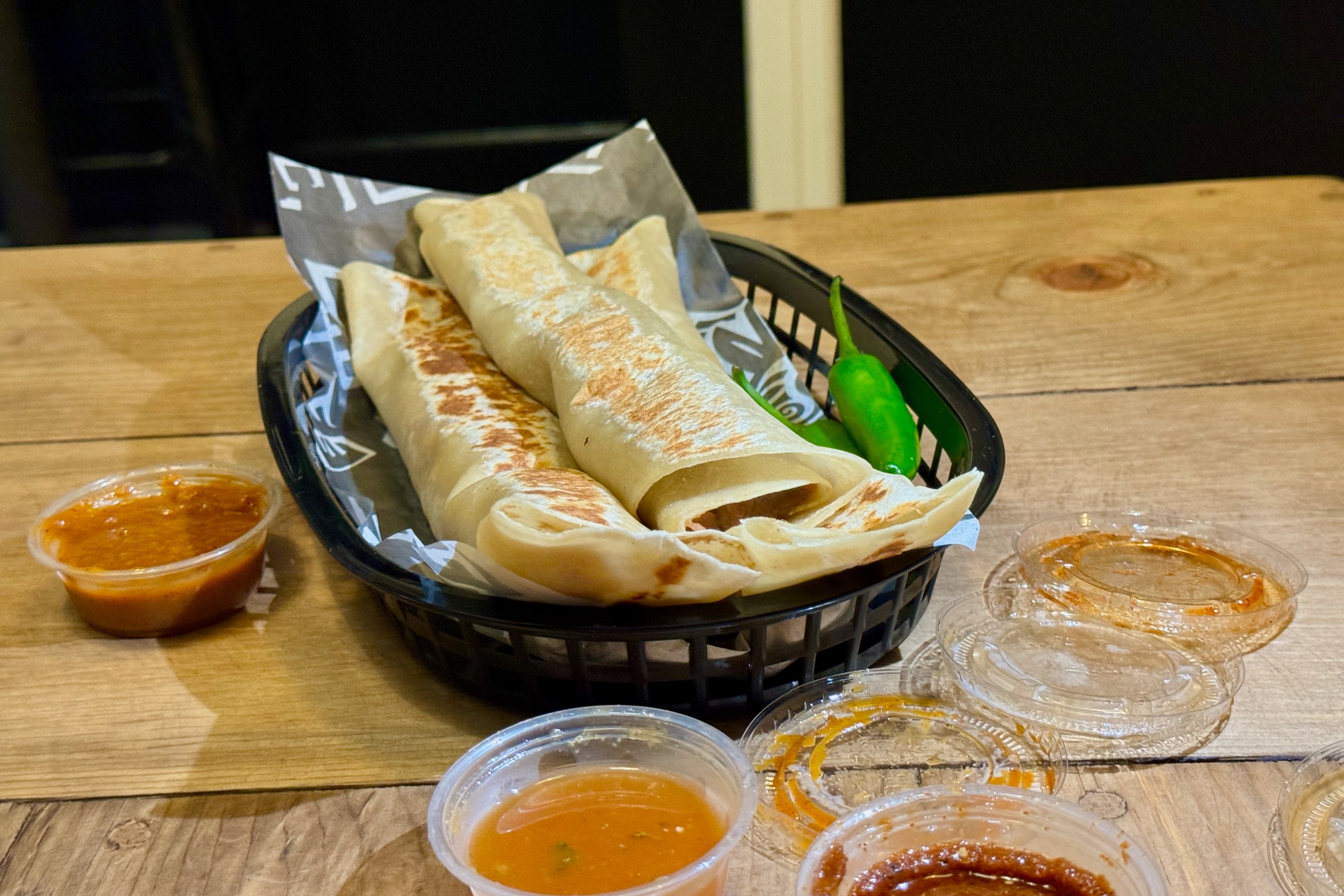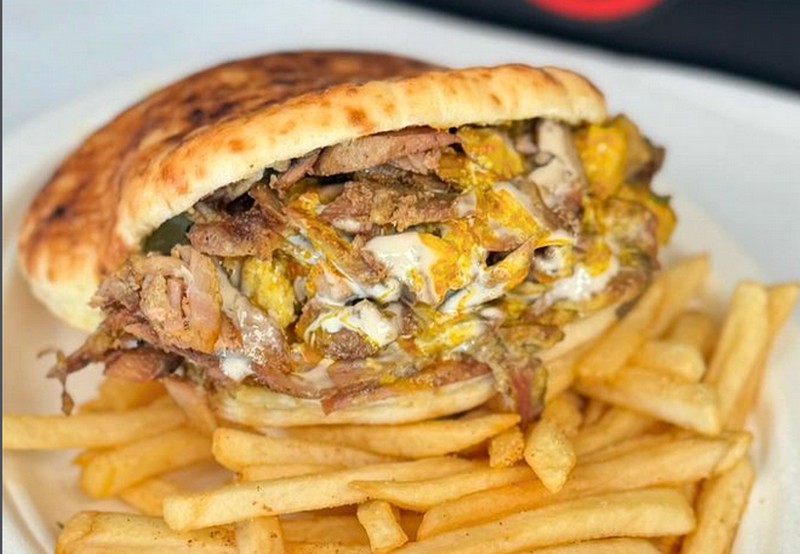Mayoral Candidate Rick Caruso Wants to Make Public Transit Safer for Women and Looks to Europe for Inspiration

Photo via Rick Caruso’s campaign website.
Transportation is a central topic of life in Los Angeles, with urgent repercussions for the world at large. We seek city leaders who prioritize exceptional and affordable public transportation, street safety, and adequate active transportation infrastructure while centering issues related to affordable transit-oriented housing development and dealing with the city’s crisis of hit and runs. Before voting for our next L.A. mayor, we needed to know where the candidates stand on the essential issue of transportation equity. In a collaboration with CicLAvia, Los Angeles County Bicycle Coalition, Climate Resolve, Streets For All, Los Angeles Walks, Act-LA, POWER, IKAR, Asian Pacific Islander Forward Movement, Pacoima Beautiful, and MoveLA, L.A. TACO presents a candid questionnaire given to all of L.A.’s mayoral candidates, with their answers in English, Spanish, Chinese, and Korean. All responses were provided by the candidates via email.
GETTING AROUND IN L.A.
How often do you walk, bike, ride transit, or otherwise get to your destinations without driving in LA? How would you judge the condition and importance of each of those transportation modes? How important is it for the next L.A. Mayor to experience all available transportation modes?
I walk my neighborhood on a regular basis, always have, and always will. I’ve built all my developments with a sense of community and walkability in mind. I learned this from studying European, primarily Italian, community squares, and community centers where cars were the last thing you would see.
I believe the potential for Los Angeles to create the same type of walkability and community is untapped and limitless and with the right planning and determination, we can make the city known for sprawl and the automobile, a truly community driven city where owning a car will no longer be a prerequisite for getting around. I also believe that we must elevate biking and transit options to the same level and truly ensure that all forms of transportation are viable, safe, efficient, and accessible.
We also have to find a way to get the costs under control. The Eno Center for Transportation pointed out that in Los Angeles the Purple Line cost $800 million per mile. In contrast, Copenhagen built a project at just $323 million per mile, and Paris and Madrid did their projects for $160 million and $320 million per mile, respectively.
If we are truly going to get Angelenos out of their cars and onto mass transit and active transportation we have to
L.A. METRO SAFETY
As Mayor, how would you incorporate community-based support and safety strategies prioritizing the needs of vulnerable Angelenos?
Restoring public safety will be a focus of my administration and that includes our mass transit system. A recent study by LADOT’s the “Changing Lanes: A Gender Equity Transportation Study” and LA Metro’s report “Understanding How Women Travel” both reported women feel significantly less safe than men on mass transit with 40% of women in LADOT’s survey stating they have feared for their safety.
As Mayor, I will put 1,500 new officers on our streets, return to community-based policing, build 30,000 shelter beds in 300 days to help get our unhoused off our streets with full wrap-around services, and I will hire 500 mental health and addiction caseworkers.
If we want to increase ridership we need people to feel safe and we need reliable service.
VISION ZERO
How would you assess LA City’s Vision Zero policy, and what concrete steps would you take to implement its Vision Zero program by 2025? What role does the Mayor have in encouraging City Council members to take political risks in supporting Vision Zero projects and commitments like the City’s Mobility Plan 2035, that may remove parking or travel lanes?
I think we can all agree that Vision Zero has not accomplished its mission and that deaths have increased. There are myriad reasons for this and some far out of the control of the City of Los Angeles. However, where the City’s role has played a part is in not having a cohesive strategy that all council members and communities have bought into and supported. Instead we have recalls being done due to bike lanes, protests because of parking lane removal, and so on and so on. The conversations around Vision Zero are important and needed and we must do better building alliances and not creating divisions.
BETTER BUSES
LA Metro’s current shortage of bus operators significantly impacts bus frequency and reliability. How would you address this problem and also further increase bus frequency and ensure service reliability as ridership rebounds? Do you support Metro’s advocacy of a fare-free transit system?
Bus operators have one of the toughest jobs in L.A. Not only do they have to operate a massive machine safely and efficiently, but they must also play police officer, mental health expert, and oftentimes a punching bag. We must do better than this and ensure that operating our transit fleets is a safe and rewarding experience with a bright future. Once we have more operators we can realistically discuss more routes and more reliable service, but until then, it’s unlikely. As for a fare-free system, that is a question that needs more conversation and input from more Angelenos and as Mayor, I will commit to doing more to have that conversation and ultimately an end result.
BUDGET & COMMUNITY PARTICIPATION
How would you create more participation, accountability, and transparency in the budgeting process for LADOT or LA Metro projects, especially among limited English proficient and low-income communities? How would you ensure that project funds are equitably distributed?
We need to provide clearer links between these projects and the impacts on the daily lives of all Angelenos, English speaking or not. Fundamentally, people engage when they feel like their input will be heard and that the projects are actually worthwhile. We must do more with translation services, outreach, and direct communication with people to ensure they understand the impact of these budget conversations.
MORE CONNECTED, LESS CONGESTED
What amenities and programs do you support to reduce traffic congestion, increase active transportation, and increase transit (bus and rail) ridership? As Mayor, how would you coordinate dozens of neighboring cities and public agencies to improve local and regional access to transportation modes aside from driving?
These are all questions that need more than 250 words to answer, but in short, we need to get people out of their cars by doing more to make living in Los Angeles less car-reliant. What that means is better planning decisions and thinking, especially with an eye towards community centers and walkability. We need more and better communication options in transit systems, like wifi and cell coverage to ensure that people can utilize their phones and laptops and we need reliable and frequent service, we can not get people out of their cars if they can not trust the bus to arrive on time. Lastly, we need more coordination and communication between agencies large and small. As Mayor and as a MTA board member, I will work on all these aspects and more.
En Español
VIAJANDO POR LOS ÁNGELES
¿Con qué frecuencia camina, anda en bicicleta, viaja en transporte público o llega a donde necesita ir sin conducir en Los Ángeles? ¿Cuál considera que es la condición y la importancia de cada uno de esos medios de transporte? ¿Cuán importante es para el próximo alcalde/alcaldesa de Los Ángeles el conocer bien todos los medios de transporte disponibles?
Camino por mi vecindario regularmente, siempre lo he hecho y siempre lo haré. He creado todos mis complejos de desarrollo para fomentar un sentido de comunidad y acceso a caminar. Aprendí esto al estudiar plazas comunitarias europeas, principalmente las italianas y centros en donde los carros eran lo último que se puede ver.
Creo que el potencial que tiene Los Ángeles para crear el mismo tipo de ciudad centrada en espacios para caminar aún están por descubrirse y con la planificación y determinación adecuadas podemos hacer que la ciudad conocida por su expansión y el automóvil sea una ciudad verdaderamente impulsada por la comunidad en la que tener carro ya no sea un requisito para transportarse. También, creo que debemos aumentar las opciones de ciclismo y transporte público al mismo nivel y de verdad garantizar que todos los medios de transporte sean viables, seguros, eficientes y accesibles.
Además, debemos encontrar una forma de mantener los costos bajo control. El Centro para el Transporte Eno señaló que en Los Ángeles la Línea Morada costó $800 millones por milla. En contraste, en Copenhague se construyó un proyecto a solo $323 millones por milla y París y Madrid hicieron sus proyectos por $160 millones y $320 millones por milla, respectivamente.
Si realmente vamos a lograr que los angelinos dejen sus carros para que usen el transporte público y el transporte activo, entonces tenemos que construir un mejor sistema y más confiable que cubra cada pulgada de esta ciudad.
SEGURIDAD EN EL METRO DE LOS ÁNGELES
Como alcalde/alcaldesa, ¿cómo incorporaría estrategias de apoyo que se originan entre la comunidad y las de seguridad que priorizan las necesidades de los angelinos más vulnerables?
El restaurar la seguridad pública será un enfoque de mi administración y esto incluye a nuestro sistema de transporte público. Un estudio reciente de LADOT “Cambiando de Carriles: Un Estudio sobre la Equidad de Género en el Transporte” ("Changing Lanes: A Gender Equity Transportation Study") y el informe de Metro “Conociendo Cómo Viajan las Mujeres” ("Understanding How Women Travel") mostraron que las mujeres se sienten mucho menos seguras que los hombres en el transporte público con el 40% de las mujeres en la encuesta quienes afirman que han temido por su seguridad.
Como alcalde pondré 1,500 oficiales nuevos en nuestras calles, retornaremos a tener una policía comunitaria, estableceré 30,000 camas en refugios en 300 días para ayudar a sacar a las personas sin hogar de nuestras calles y ofreceré servicios integrales completos y contrataré a 500 trabajadores sociales, de salud mental y que tratan adicciones.
Si queremos aumentar el número de pasajeros, necesitamos que las personas se sientan seguras y necesitamos un servicio confiable.
VISION ZERO
¿Cómo evaluaría la norma de Vision Zero de la ciudad de Los Ángeles y qué pasos concretos tomaría para implementar este programa para 2025? ¿Qué papel desempeña el alcalde/alcaldesa en exhortar a los miembros del Concilio para que tomen riesgos y apoyen la Vision Zero y se comprometan a realizar proyectos como el Plan de Movilidad de la Ciudad para 2035, el cual puede eliminar los carriles de estacionamiento o de viaje?
Creo que todos podemos estar de acuerdo en que Vision Zero no ha cumplido su misión y que las muertes han aumentado. Existen una multitud de razones por esto y algunas están fuera del control del Ayuntamiento de Los Ángeles. Sin embargo, en donde el Ayuntamiento ha jugado un papel importante ha errado en no tener una estrategia organizada que todos los miembros del Concilio y las comunidades hayan aceptado y apoyado. En cambio, hemos tenido peticiones para quitar a funcionarios debido a la creación de carriles para ciclistas, protestas debido a la eliminación del carril de estacionamiento, etc. Las pláticas en torno a Vision Zero son importantes y necesarias y debemos mejorar en la creación de alianzas y no crear divisiones.
MEJOR SERVICIO DE AUTOBUSES
La actual escasez de operadores de autobuses de Metro afecta significativamente la frecuencia, la consistencia y el poder depender en los autobuses. ¿Cómo abordaría este problema al mismo tiempo que aumenta la frecuencia de los autobuses y garantiza la consistencia del servicio a medida que se recupera la cantidad de pasajeros? ¿Apoya la lucha por un sistema de transporte sin tarifas?
Los operadores de autobuses tienen uno de los trabajos más difíciles en Los Ángeles. No solo tienen que operar una máquina enorme de manera segura y eficiente, sino que también deben hacerla de oficiales de policía, expertos en salud mental y muchas veces son los que reciben los golpes como si fuesen un saco de boxeo. Debemos mejorar esto y garantizar que el operar nuestras flotillas de transporte sea una experiencia segura y gratificante y que provee un futuro brillante. Una vez que tengamos más operadores, podremos platicar de manera realista sobre un servicio más confiable, pero hasta entonces, esto será poco probable. En cuanto a un sistema de tarifas gratuitas, esa es una pregunta que necesita más diálogo y recolectar opiniones de más angelinos y, como alcalde, me comprometeré a hacer más de mi parte para tener esa conversación y, en última instancia, tomar una decisión.
EL PRESUPUESTO Y PARTICIPACIÓN DE LA COMUNIDAD
¿Cómo fomentaría más participación, responsabilidad y transparencia en el proceso de la creación de presupuestos para los proyectos del Departamento de Transporte de Los Ángeles (LADOT, por sus siglas en inglés) o Metro, especialmente entre las comunidades con dominio limitado del inglés y otras de bajos ingresos? ¿Cómo garantizaría que la distribución de fondos entre los proyectos se realice de manera equitativa?
Necesitamos proporcionar enlaces más claros entre estos proyectos y sus impactos en la vida diaria de todos los angelinos, ya sea que hablen inglés o no. Principalmente, la gente participa cuando sienten que sus opiniones serán escuchadas y que los proyectos valen la pena realmente. Debemos hacer más con los servicios de traducción, alcance y comunicación directa con las personas para garantizar que comprendan el impacto de las conversaciones sobre presupuestos.
MÁS CONEXIÓN, MENOS CONGESTIÓN
¿Qué servicios y programas apoya usted para reducir la congestión del tráfico, aumentar el transporte activo y aumentar el número de pasajeros (en autobús y tren)? Como alcalde/alcaldesa, ¿cómo coordinaría esfuerzos entre docenas de ciudades y organismos públicos para mejorar el acceso local y regional a los diversos medios de transporte aparte de conducir?
Todas estas son preguntas que necesitan más de 250 palabras para responderse, pero en resumen, necesitamos encontrar maneras en las que la gente deje sus carros y hacer más para que la vida en Los Ángeles sea menos dependiente del carro. Esto quiere decir que se necesita mejorar en el de decisiones y pensamientos sobre planificación, especialmente enfocándose en los centros comunitarios y espacios para caminar. Necesitamos más y mejores opciones de comunicación en los sistemas de transporte, como conexión a internet (wifi) y cobertura celular para garantizar que las personas puedan utilizar sus teléfonos y computadoras portátiles y necesitamos que el servicio sea seguro y frecuente, no podemos lograr que las personas dejen sus carros si no pueden depender que el autobús llegará a tiempo. Por último, necesitamos más coordinación y comunicación entre departamentos y entidades grandes y pequeñas. Como alcalde y como miembro de la Mesa Directiva del MTA trabajaré en todos estos aspectos y otros más.
In Chinese
- 在洛杉矶的出行方式
在洛杉矶而不开车的情况下,您需要多久时间以步行、骑自行车、乘坐公交或以其他方式到达目的地?您如何判断每种交通方式的状况和重要性?对于下任洛杉矶市长来说,体验所有可用的交通方式有多重要?
我经常在我的社区散步,一直都是,将来也会这样,我在所有的开发项目中都考虑到了社区意识和可步行性。我是通过学习欧洲(主要是意大利)的社区广场和社区中心了解到这一点的,在那里,汽车是相当罕见的东西。
我相信,洛杉矶创造同样类型的步行和社区的潜力是未被开发且无限的,只要有正确的规划和决心,我们可以使这个以无序扩张和汽车闻名的城市成为一个真正由社区驱动的城市,拥有汽车将不再是出行的前提条件。我还认为,我们必须将自行车和公交车的选择提升到同一水平,并真正确保所有形式的交通都是可行的、安全的、高效的和可及的。
我们还必须找到一种方法来控制成本。埃诺交通中心指出,在洛杉矶,紫线车道每英里耗资8亿美元。相比之下,哥本哈根建造的项目仅为每英里3.23亿美元,巴黎和马德里的项目分别为每英里1.6亿美元和3.2亿美元。
如果我们真的要让洛杉矶人摆脱他们的汽车,转而使用公共交通和主动运输,我们必须建立一个更好、更可靠的系统,涉及到这个城市的每一寸土地。
- 洛杉矶地铁安全
作为一名市长,您将如何纳入以社区为基础的支持和安全策略,优先考虑弱势洛杉矶人的需求?
恢复公共安全将是我执政的重点,这包括我们的大众运输系统。洛杉矶交通局最近进行的一项研究是 "改变车道:性别平等交通研究 "和洛杉矶地铁公司的报告 "了解女性如何出行 "都报告说,女性在乘坐公共交通时的安全感明显低于男性,在洛杉矶交通局的调查中,40%的女性表示她们曾担心自己的安全。
作为一名市长,我将在我们的街道上投入1500名新警官,回到以社区为基础的警务工作,在300天内建立30,000个庇护所床位,以帮助我们的无家可归者远离我们的街道,并提供全面的环绕式服务,我还将雇用500名精神健康和成瘾个案工作者。
如果我们想增加乘客量,我们需要人们感到安全,我们需要可靠的服务。
- 零死亡愿景
您如何评估洛杉矶市的“零死亡愿景”政策,以及您将采取哪些具体步骤到2025年实施其“零死亡愿景”计划?市长在鼓励市议会成员承担政治风险以支持“零死亡愿景”项目和承诺(如2035年城市交通计划)方面发挥什么作用,这些项目和承诺可能会取消停车位或行车道?
我想我们都同意,"零死亡愿景 "并没有完成其使命,死亡人数依然有所增加。这有无数的原因,其中一些远远超出了洛杉矶市的控制范围。然而,洛杉矶市发挥作用的地方在于没有一个所有议员和社区都认同并支持的统一的策略。相反,我们回顾了因自行车道、因停车道拆除而引发的抗议等等的原因而采取的行动。围绕 "零死亡愿景 "的对话是重要的和必要的,我们必须通过建立联盟而不是制造分裂来做得更好。
- 更佳的公交车
洛杉矶地铁公司目前的公交车操作员短缺,严重影响了公交车班次和可靠性。您将如何解决这个问题,以及并随着乘客量的增加,进一步增加公交车的班次,确保服务的可靠性?您是否支持地铁公司倡导的免费交通系统?
公交车运营商的工作是洛杉矶最艰难的工作之一。他们不仅必须安全高效地操作一台大型机器,还必须扮演警察、心理健康专家,有时还得扮演出气筒。我们必须做得更好,确保运营我们的运输车队是一种安全、有益的体验,有着光明的未来。一旦我们有了更多的运营商,我们就可以现实地讨论更多的路线和更可靠的服务,但在那之前,这是不可能的。至于免车费系统,这是一个需要更多洛杉矶人进行更多对话和投入的问题。作为一名市长,我将致力于做更多的工作来进行对话,并最终达成结果。
- 预算和社区参与
您将如何在洛杉矶交通局或洛杉矶地铁项目的预算编制过程中,尤其是在英语水平有限和低收入社区中,创造更多的参与、问责和透明度?您将如何确保项目资金的公平分配?
我们需要在这些项目和对所有洛杉矶人(无论是否讲英语)的日常生活的影响之间提供更清晰的联系。从根本上说,当人们感觉到他们的意见会被听取,并且这些项目确实是有价值的,他们就会参与进来。我们必须在翻译服务、外联和与人们直接沟通方面做得更多,以确保他们了解这些预算对话的影响。
- 高连通,低拥堵
您支持哪些便利设施和计划来减少交通拥堵、增加交通流动量、和增加公交(公共汽车和铁路)乘客量?作为一名市长,除了开车之外,您将如何协调数十个邻近城市和公共机构,以改善当地和区域交通方式?
这些都是需要超过250个字来回答的问题,但简而言之,我们需要做更多的工作让人们摆脱他们的汽车,使生活在洛杉矶不那么依赖汽车。这意味着更好的规划决策和思维,特别是着眼于社区中心和步行能力。我们需要在交通系统中提供更多和更好的通信选择,如wifi和手机覆盖,以确保人们可以利用他们的手机和笔记本电脑,我们需要可靠和频繁的服务,如果人们不相信公交车会准时到达,我们就不能让他们摆脱他们的汽车。最后,我们需要大小机构之间更多的协调和沟通。作为一名市长和大都市交通管理局(MTA)的董事会成员,我将在所有这些方面以及更多方面开展工作。
In Korean
저는 일상적으로 인근 지역을 걸어다닙니다. 항상 그래왔고 앞으로도 그럴 것입니다. 저는 공동체 의식과 걸어다닐 수 있는 도시를 머릿속에 그리며 모든 개발안을 구상했습니다. 유럽인들, 주로 이탈리아 사람들은 지역사회 광장과 지역사회 센터에서 자동차를 보고 싶어하지 않다는 것을 보며 깨달은 점이 있습니다.
저는 로스앤젤레스가 유럽과 비슷한 유형의 걸어다닐 수 있는 도시로 조성될 수 있는 잠재력을 지니고 있다고 믿습니다. 지역사회는 아직 개발되지 않았고 무한한 가능성을 지니고 있으며, 올바른 계획과 결단력으로 무분별한 확장과 자동차로 대변되는 도시를, 자동차 소유가 더 이상 이동의 전제 조건이 아닌 진정한 지역사회 중심 도시로 거듭나게 만들 수 있습니다. 저는 또한 우리가 자전거와 대중교통 옵션을 동일한 수준으로 끌어올려야 하고, 모든 형태의 교통수단이 실행 가능하고 안전하고 효율적이며 접근 가능하도록 진정으로 보장해야 한다고 믿습니다.
또한 비용을 통제할 수 있는 방안도 강구해야 합니다. 이노 교통센터(Eno Center for Transportation)는 로스앤젤레스의 퍼플 라인 비용이 마일당 8억 달러라고 지적했습니다. 이와는 대조적으로 코펜하겐은 마일당 3억 2,300만 달러에 프로젝트를 건설했으며 파리와 마드리드는 각각 마일당 1억 6,000만 달러와 3억 2,000만 달러에 프로젝트를 수행했습니다.
로스앤젤레스 시민들을 진정으로 자동차에서 벗어나 대중교통과 적극적인 교통수단으로 이행시키려면, 도시 전역의 구석구석까지 닿는 더 개선되고 신뢰할 수 있는 시스템을 구축해야 합니다.
공공안전을 회복하는 것은 제가 이끄는 행정부의 주안점이 될 것이며 여기에는 대중교통 시스템이 포함됩니다. 로스엔젤레스 교통부(Los Angeles Department of Transportation, LADOT)의 '차선 변경: 성평등 교통 연구 (Changing Lanes: A Gender Equity Transportation Study)'의 최근 결과와 LA Metro의 보고서 '여성이 여행하는 방법 이해(Understanding How Women Travel)'는 모두 대중교통 이용 시 여성이 남성보다 훨씬 덜 안전하다게 느낀다고 나타났으며, LADOT의 설문조사에서 40%의 여성이 안전에 두려움을 느낀다고 보고했습니다.
시장으로서 저는 1,500명의 신입 경찰관을 거리에 배치하고 지역사회 기반 치안활동을 재개하며, 300일 동안 30,000개의 쉼터 침상을 구축하여 전면적이고 포괄적인 서비스(wrap-around service)로 거리에서 노숙인을 없앨 것이며, 정신건강 및 중독 사회복지사 500명을 고용할 것입니다.
승객 수를 늘리려면 시민들이 안전하다고 느끼며 신뢰할 수 있는 서비스가 필요합니다.
Vision Zero는 임무를 완수하지 못했고 사망자가 증가했다는 데 우리 모두 동의할 것으로 생각합니다. 여기에는 수많은 이유가 있으며 일부는 로스앤젤레스 시에서 통제할 수 있는 사안이 아닙니다. 하지만 모든 시의원과 지역사회가 동의하고 지원하는 응집력 있는 전략이 부재하다는 점에서 시가 정책 실패에 일부 기여했다고 생각합니다. 대신 우리는 자전거 도로로 인한 리콜, 주차 차선 철거로 인한 시위 등을 겪고 있습니다. Vision Zero에 관한 대화는 중요하고 필요합니다. 우리는 동맹 관계를 더 공고하게 구축하고 분열하지 않아야 합니다.
버스 기사는 LA에서 가장 힘든 직업 중 하나입니다. 이들은 거대한 기계를 안전하고 효율적으로 조작해야 할 뿐만 아니라 경찰관, 정신건강 전문가, 그리고 종종 샌드백 역할도 해야 합니다. 이러한 역할은 개선되어야 하며 대중교통 운전이 안전하고 보람있는 경험으로 밝은 미래가 될 수 있게 보장해야 합니다. 기사가 늘어나면 노선 증대와 더 신뢰할 수 있는 서비스에 대해 현실적으로 논의할 수 있겠지만, 기사가 증원되기 전에는 가능성이 낮아 보입니다. 무상 요금 시스템에 관해서는 로스앤젤레스 시민들과 더 많은 대화 및 시민의 의견이 필요한 질문이며, 시장으로서 저는 궁극적으로 최종 결과를 이끌어 내기 위해 더 많은 대화를 할 것입니다.
우리는 영어 구사력에 관계없이, 이러한 프로젝트와 모든 로스앤젤레스 시민의 일상생활에 미치는 영향 사이에 보다 명확한 연결성을 제공해야 합니다. 기본적으로 시민들은 자신의 의견이 경청되고 있다고 느끼고 프로젝트가 실제로 가치가 있다고 느낄 때 참여합니다. 우리는 이러한 예산 관련 대화의 영향을 이해할 수 있도록 통번역 서비스, 지원 활동, 시민들과의 직접적인 소통을 위해 더 노력해야 합니다.
이 질문에 답하려면 모두 250자 이상으로 설명할 필요가 있지만, 간단히 말해서 우리는 로스앤젤레스 생활에서 자동차 의존도를 낮추기 위해 더 노력함으로써 시민들을 자동차에서 벗어나게 해야 합니다. 이것이 의미하는 바는 특히 지역사회 센터와 걸어다닐 수 있는 도시를 염두에 두고 더 나은 계획 결정과 사고를 하는 것입니다. 우리는 대중교통 이용객들이 전화기와 노트북을 사용할 수 있게 Wi-Fi 및 휴대전화 수신 서비스와 같이 교통 시스템에서 더 효과적이고 다양한 통신 옵션을 제공해야 합니다. 또한 버스가 정시에 도착한다는 믿음이 없으면 시민들이 자동차를 포기하게 할 수 없기에 신뢰할 수 있고 운행 빈도가 잦은 서비스가 필요합니다. 마지막으로 크고 작은 기관들 사이에 더 많은 협력과 소통이 필요합니다. 시장으로서 그리고 MTA 이사회 위원으로서 저는 이 모든 측면과 그 이상을 위해 일할 것입니다.
Stay in touch
Sign up for our free newsletter
More from L.A. TACO
Juárez-Style Burritos Have Arrived in Southern California, And They are Already Selling Out In Less than An Hour
The month-old strip mall taquería in Anaheim make all their flour tortillas from scratch using both lard and butter, resulting in an extremely tender vehicle for their juicy guisados like carne en su jugo, carne deshebrada, chile colorado, chile relleno, and chicharrón. Every tortilla is cooked to order, too.
Urgent: L.A. TACO Falling Short of Fundraising Goals and Needs Your Support
Emergency. This is not a test. This is not a ruse. This is not a marketing scheme. We need your support if we're going to make it and every single membership counts.
What To Eat In L.A. This Weekend: Mexican-Style Pastrami, ‘Trashburgers,’ and Flamin’ Jim Morrisons
Plus, a new shawarma spot in Tarzana and the country's first wine festival dedicated solely to orange "skin contact" wine happening in Hollywood.
The 11 Best Backyard Restaurants in Los Angeles
Despite many requests to publish this guide, L.A. TACO has been somewhat protective of these gems to not "burn out the spots." However, we wanted to share it with our small, loyal pool of paid members, as we appreciate your support (and know you to be okay, non-NARCs). Please enjoy responsibly and keep these 'hood secrets...secrets.
Here’s What an L.A. TACO Membership Gets You and Why You Should Support Local Journalism
With more than 30 members-only perks at the best L.A. restaurants, breweries, and dispensaries waiting to be unlocked, the L.A. TACO membership pays for itself!




